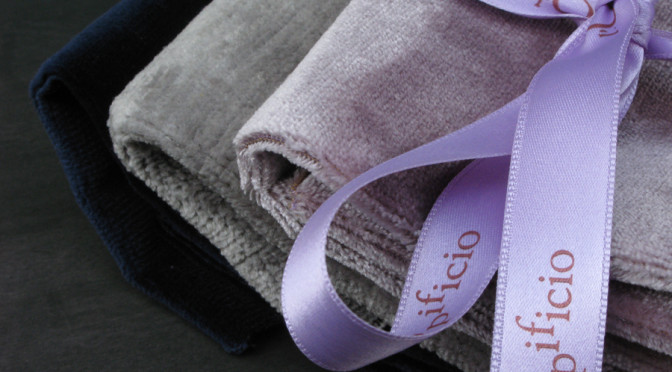Velvet: one of the most appreciated fabrics. Emblem of wealth and preciousness, there are so many varieties.

The timeless charm of Velvet: one of the most appreciated fabrics. Emblem of wealth and preciousness, there are so many varieties. Few fabrics caress our senses with such intensity and tickle our imagination, telling us stories of opulent interiors and regal garments: velvet, with its bright tones and warm silkiness, has this gift, cherished for centuries by designers, artists, and lovers of beauty in general.
Its main characteristic is to have a shaved and very dense pile on the right side (in this case we speak of united, smooth or cut velvet) or a series of small loops of thread that protrude from the weave (curly velvet).
The name is derived from the Latin term “vellus”: fleece, shearing or cloak, and it aptly describes the typical pile finish.
These differences are accentuated by various workmanship thanks to which we have at our disposal corduroy (ribbed velvet), dévoré (on which transparency effects are obtained through selective dissolution chemical processes of the fiber), froissé (with a crumpled appearance), soprarizzo (operated to obtain a damask or chiseled result), velveton (namely fustian, used mainly for sportswear and technical purposes), and jacquard (with a design woven into the weave).
Traditionally, the chosen fiber was silk, which made the velvet particularly shiny and soft to the touch, but also precious and delicate (often it was even enriched with gold or silver leaf). Later, the use of cotton, linen, wool, and mohair was introduced, which made the fabric less luxurious but more resistant. Recently, synthetic velvets have also been developed (especially in polyester, acetate, nylon, and viscose).
The first traces of this material are lost in an indefinite place along the legendary "Silk Road," probably in the Kashmir region, nestled between India, Pakistan, and China, from which, thanks to the entrepreneurial spirit of Arab merchants, it arrived in Europe and in particular in Italy, the place of origin for the entire 13th century and beyond, of supplies for the entire continent, produced and exported from the cities of Lucca, Genoa, Florence, and Venice.
Later this tradition passed into the hands of the Flemish, and the velvets of Bruges came to have a reputation in the 16th century not inferior to those of the great Italian cities.
This fabric, appreciated by the nobles of all epochs following its introduction (so much so that Richard II of England decreed in 1399 that no other fabric would touch his skin and that he would be buried in it), has not failed to inspire illustrious artists, among whom the most famous remains Titian, who made extensive use of it in his portraits.
In fashion, velvet has recently returned to the center of public attention in 1996 when Gwyneth Paltrow wore a crimson velvet tuxedo designed by Tom Ford for Gucci at the MTV Music Awards evening.
Velvet has also made a great return to furnishings for the particularly elegant, sensual, and welcoming touch that only velvet can give to interiors. The most popular are the solid-colored velvets in natural fiber, silk above all, but also cotton, linen, and wool which adapt well to both the most classic environments and those of design.
In our online store, you will find a wide selection of high-end velvets for the home.